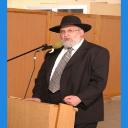Yahoo Answers is shutting down on 4 May 2021 (Eastern Time) and the Yahoo Answers website is now in read-only mode. There will be no changes to other Yahoo properties or services, or your Yahoo account. You can find more information about the Yahoo Answers shutdown and how to download your data on this help page.
Hebrew difference between Patah and Qamatz?
My teacher this year wants us to write most things with vowels after about three years of not using vowels. Irritating. She said we can use qamatz and patah interchangeably, but I was wondering if anyone knew the difference between them, and the rules in using them?
Thanks
Oops, sorry I was unclear. My teacher said in class we can use them interchangeably--she knows there is a difference, but does not want to take the time to teach us...my class complains too much as it is...
She tried to explain it to us once but nobody got it. She IS Israeli...
8 Answers
- ?Lv 51 decade agoFavourite answer
You know, I couldn't tell you the grammatical rules that dictate when to use patach and when to use komotz, but, the difference is pashut: They're two different vowel sounds.
The distinction between these two sounds seems to be lost in a lot of Hebrew dialects, the same way fewer and fewer people can distinguish between a tav with vs. without a dagesh. (For Ashkenazim, it's tav vs. sav - to the Yemenites and some Sephardim, and I think this is probably closer to the way it was originally in part because it's paralleled in classical Arabic, it's tav vs. thav, and in Israeli Hebrew they're both pronounced tav.)
So yeah, a lot of people use them interchangeably, but this isn't technically correct. If you want to distinguish between the two, like traditional Ashkenazim, and I think Yemenites, do, then the patach (for those of you who read Hebrew but don't know what those little diacritical marks are called, it's the one that looks like a small dash under the letter) is pronounced "ah" like in "father". The komotz (technically you could spell it "kamatz" and you wouldn't be wrong), this is the one that looks like a little "T" under the letter, and it's pronounced like... well, most explanations I've seen say it's like the "aw" in "saw". I would say it's more like the "o" in the way a New Yorker says "coffee" (if you watched SNL back in the Mike Myer days, think of "Coffee Talk with Linda Richman").
Sorry I wasn't able to answer your question in its entirety - I'm not really an expert in dikduk, but I've been around enough to figure out a lot of different regional variations in Hebrew. In any event, I hope you find this useful. Good luck with your class.
- ?Lv 61 decade ago
Your teacher apparently does not know the difference, and therefore thinks that they are interchangeable. It is much better to write without vowels than to use the wrong ones.
While there are indeed rules -- not to mention the difference between qamatz qatan and qamatz gadol (and hataf-qamatz) -- many words have no obvious rule, and you must learn the words. And two words, one with patah and one with qamatz, often have different meanings.
As in alma alma, al maal ma tomri li ndod vlo tomri lin dod.
It helps if you pray or read the Torah with havara ashkenazit, because then you hear the difference.
EDIT: After reading the clarification, I still believe that your teacher does not know the difference (although she agrees that there IS a difference), and as such should look for a job as a cook or a mechanic, and leave teaching Hebrew to people who know the language very well.
It is as though a teacher of English said to use "S" and "C" interchangeably.
.
- Aryeh MLv 61 decade ago
The Patach is a "short" vowel. The Kamatz is used for two vowels, one short and one long. As vowels are paired, the long kamatz is the pair of the patach. The short kamatz is the pair of the cholam.
Ashkenazim and Temanim pronounce the patach and kamatz differently. Sefardim pronounce the patach and long kamatz the same, but pronounce the short kamatz like the Ashkenazic kamatz.
Are you familiar with the rules of short and long vowels and of their applications? A short vowel must be closed (unless accented) thus if the next letter after an unaccented short vowel is not vocalized with a shwa nach, then it will take a dagesh. Long vowels need not be closed and never are unless they are accented.
- 6 years ago
Lots of answers and they're all different!! I'd say your teacher either doesn't know the different or else doesn't know how to teach. Why does she blame the students because they "didn't get it"? She should blame herself for not teaching clearly enough so that they DO "get it".
- 1 decade ago
I'm certainly not an expert in Hebrew, having studied the language in New York, but I speak several languages and can give you a generic answer: All languages have different dialects and pronunciations. The English language uses short and long vowels in the same word, depending on one's region or country of origin. I think we sometimes go overboard in worrying about the little things, rather than seeing the whole picture. Unless you want to be a linguist by profession, I wouldn't worry too much about this.
- 1 decade ago
patach makes an ah sound because it's paaatach. kumutz makes the uh sound because it's kuuumutz.
that's kind of like tzeirei and segol. my teacher is israeli and she says the both make an eh sound. but that's only true for israelis. tzeirei makes an ay sound because it's tzeeeiiiirei not tzereh. she says a tzeirei only makes an ay sound if there is a yud after it. that really bugs me.
- Dalia MLv 51 decade ago
I would say: kamatz is weak 'ah' and patah is strong
anyway, it's better if you visit this site, one of the "Maskilon" section might help:




